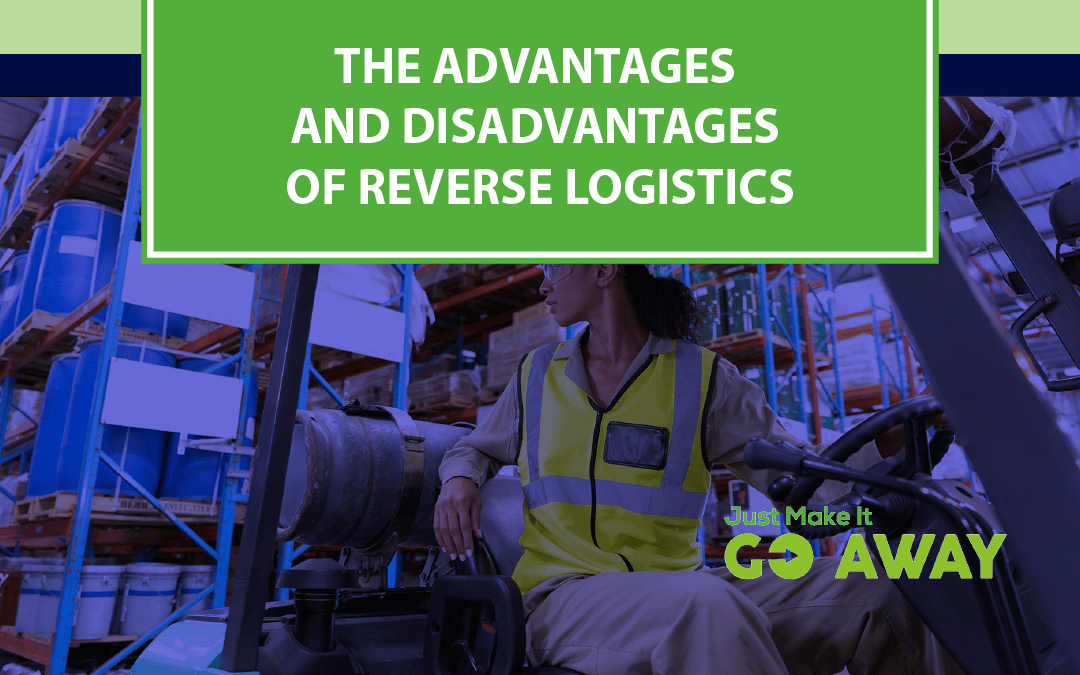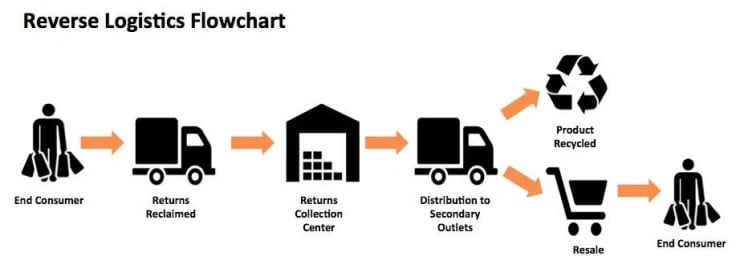When thinking about supply chain management, most people imagine the process of goods flowing from manufacturers to suppliers to consumers. Goods, however, sometimes move backwards through the supply chain. When this occurs, it is called reverse logistics. There are advantages and disadvantages of reverse logistics in business. Reverse logistics can be defined as the process of moving goods back up the supply chain from customer to supplier to manufacturer. Reverse logistics is a vital part of most businesses. Ensuring your company has a reverse logistics strategy can lead to increased efficiency, higher profits, and higher customer satisfaction.
What is the Purpose of Reverse Logistics?
Reverse logistics refers to a wide range of business activities. For all of them, the main goal is to recoup value and ensure repeat customers.
Here are a few examples:
Returns
One of the most common forms of reverse logistics is processing returns. Most consumer goods businesses should have a fully built-out return process for their customers. This process should not only include a plan for how consumers should handle returns but also include what happens to products once they are returned.
Repairs
To extend the life of their products, some companies may offer repair services for their products. This decision involves building out a process for customers to return their goods to be repaired. If a company decides to handle those repairs in-house, it will need to set up a process for evaluating condition and damage and then implementing those repairs before sending them back to the consumer.
Recalls
In some cases, products may be recalled for health or safety issues. In these cases, businesses must determine how consumers will be notified and whether items need to be returned or fixed. Then they have to successfully implement their plan in a timely manner.
Repackaging
Building out a process for inspecting returned goods and then repackaging them may be necessary for some businesses. This could be a way for companies to reduce lost profit on items that are returned in new condition. Some companies may offer rented or leased items that need to be inspected, cleaned, and repackaged before they are offered again.
Resell
If goods are returned and are not able to be sold again, they can be liquidated to third parties. Stores like Amazon Warehouse, TJ Maxx, and Just Make it Go Away all buy stock from companies with excess inventory to sell at a discount. This is a good way for businesses to cut losses.
Recycling
Some goods are not fit to be disposed of in the garbage. Batteries, light bulbs, electronics, and other products need to be disposed of in a particular way. Businesses may decide to offer disposal or recycling services for products of theirs that have reached the end of their life cycle. For instance, Apple offers recycling programs for its products. For items that are still in good condition, they also offer store credit in exchange.
Advantages of Reverse Logistics
Reverse logistics should not be an afterthought because there are many advantages for your company. For instance, companies with a robust reverse logistics system may experience:
Improved Customer Satisfaction
Have you ever had a difficult time returning something you bought online? Then you know how important it is to have an easy-to-follow and painless return process in place for your customers. When customers are able to return or exchange products in a painless manner, they will be more satisfied.
Increased Profitability
Implementing reverse logistics can also increase profitability. Returned products may be able to be repackaged and resold. If they can’t be resold as new, they may be refurbished or recycled. All of these can, to some degree, recoup lost profit from the return.
Improved Sustainability
This advantage comes with a caveat. Not all reverse logistics processes prioritize sustainability – but they should. Offering warranties, repairs, and disposal services can all improve sustainability and contribute to a more circular economy.
Disadvantages of Reverse Logistics
The disadvantages of reverse logistics primarily come from poorly executed operations. These include:
Difficult Managing Process
Reverse logistics are complicated. Managing volume and efficient processing can be hard to implement and maintain. Every day, a massive amount of returns are made. In 2021, returns were estimated to be upwards of $761 billion. E-commerce has increased the rate of returns in recent years and it is expected to keep rising. It’s easy for chaos to ensue when there is potential for so much volume and so many moving parts.
Loss of Profit
If companies let returned items sit unprocessed, they become excess inventory. The longer they stay that way, the more profit the company is losing. With increasing return rates, companies need to be able to handle the volume of returns they receive. One step some companies have implemented is having customers give a reason as to why they are making a return or exchange. This allows for faster processing once the company receives the returned items.
Environmental Impact
If companies do not consider sustainability, their reverse logistics may contribute greatly to increased waste and emissions generated. Coordinating return drop-offs and routes can greatly decrease the number of emissions generated through shipping. Packaging can also have a large impact on the waste generated.
Reverse Logistics Plan
It is in every company’s best interest to build out its reverse logistics plans. Businesses should carefully consider what types of reverse logistics make sense for their products and their consumers. Sustainability should also be top of mind. When done well, having robust reverse logistics can greatly benefit companies.
Are your reverse logistics processes benefitting you?


